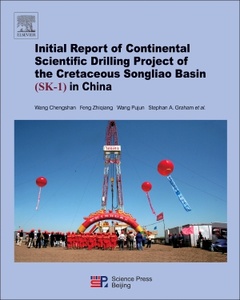Description
Continental Scientific Drilling Project of the Cretaceous Songliao Basin (SK-1) in China
Author: Wang Chengshan
Language: English
Subjects for Continental Scientific Drilling Project of the...:
722 p. · 20.9x27.7 cm · Paperback
Description
/li>Contents
/li>Readership
/li>Biography
/li>Comment
/li>
Continental Scientific Drilling Project of the Cretaceous Songliao Basin (SK-1) in China is the first reference to provide the results of the first part of scientific drilling project at the Songliao Basin in the Daqing oil field, the largest known oil field in China. The project has two major objectives: one is to correlate the oceanic and continental records and determine the principal drivers of climate change in order to assist in future climate change predictions and its influence on the earth's environment. The second is to further test the theory of terrestrial genesis of hydrocarbons, and to explore the formation of intra-continental sedimentary basins, as many are major hydrocarbon provinces. In addition, this project provides the scientific basis for exploration of the Daqing Oilfields, which have a yearly production of forty million tons of oil.
The world is entering a new exciting era to explore in which scientific drilling will provide a quantum leap in our understanding of its deep earth and history. Continental Scientific Drilling Project of the Cretaceous Songliao Basin (SK-1) in China will play an important role in promoting scientific drilling and earth system science research.
- Summarizes the geological background, seismic profile, and tectonic evolution of the Songliao Basin
- Provides detailed information on drilling technology of SK-1, which successfully obtained ~2500m core with a recovery rate of ~95%
- Includes detailed core information: stratigraphic charts, core photographs, and core photograph identification tables




